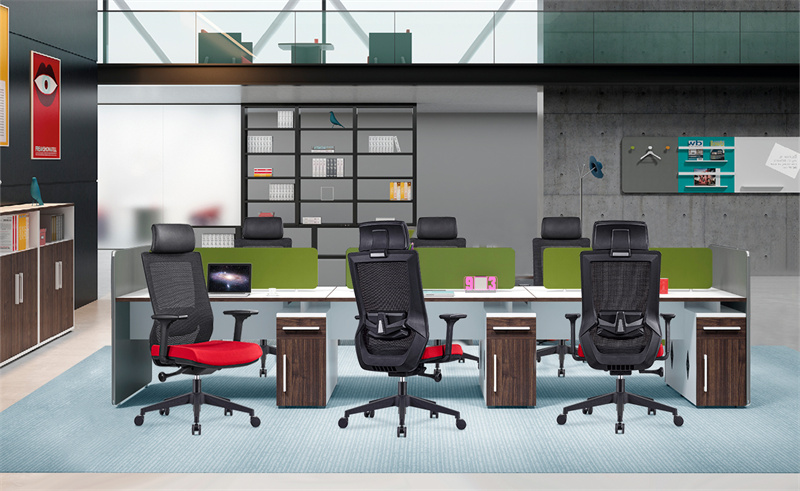From an ergonomic point of view
Seat height adjustment: The design has the function of adjustable height office chair, through the air pressure bar and other devices, so that users can adjust the seat to the appropriate height according to their height, leg length and desk height, to ensure that the feet can be flat on the ground, the thigh is parallel to the ground, the knee and the hip maintain the same level line, reduce the pressure on the legs and waist.
Chair back adjustment: The design of the chair back should conform to the natural curve of the human spine, and an adjustable waist back separation type chair back can be used. The lumbar support part can be adjusted up and down, back and forth according to the user’s sitting position and lumbar support needs to provide accurate support for the waist; The whole back of the chair can achieve multi-angle tilt lock, which is convenient for users to find a comfortable back support Angle under different states such as work and rest.

Seat cushion design: The seat cushion must have the appropriate hardness and depth. The sponge or memory cotton with good elasticity and breathability is selected on the material, which can automatically deform according to the pressure of the human body and fit the curve of the hip. The seat cushion should be deep enough to allow the thigh to be fully supported and avoid suspension resulting in poor blood circulation.
From the perspective of usage scenarios
Working scenario: For users who need to work at the desk for a long time, an office chair with adjustable armrests can be designed. The armrests can be adjusted up and down, front and back, and left and right, so that the arms can be naturally placed on the armrests when operating the keyboard and mouse, reducing shoulder and arm fatigue. At the same time, the wheels of the office chair should have good smoothness and stability, which is convenient for users to move flexibly around the desk and improve work efficiency.
Meeting scene: Meeting office chairs usually need to have a certain aesthetics and tidiness, the design can be simple, generous style, color and material coordination with the meeting room environment. In terms of function, the seat is required to have better comfort, which can allow users to maintain a good sitting posture during a long meeting, and at the same time, some storage functions can be considered, such as the document storage bag under the seat, so as to facilitate users to place meeting materials.
Rest scenario: Some office environments may require employees to take breaks from work, and this type of office chair can be designed to be reclined and can be reclined at the right Angle to form a recliner like state. Some can also be equipped with foot pedals to further enhance the comfort of rest and help users relieve work fatigue.
From the perspective of special population needs
Obese people: Office chairs designed for obese people, the size of the seat cushion and the back of the chair should be larger to provide sufficient support area and avoid excessive pressure on the body. At the same time, the load-bearing capacity of the chair should be stronger, the structure is more stable, and the use of safety is ensured.
Pregnant women: The office chair used by pregnant women should be more soft and comfortable, and the back of the chair should have enough curvature and support, which can fit the waist and back of pregnant women well and reduce the physical burden during pregnancy. Some auxiliary functions can be added, such as adjustable side supports, to provide certain support and protection for the pregnant woman’s abdomen.
People with disabilities: For people with disabilities, the design of office chairs should fully consider their physical condition and ease of operation. For example, office chairs designed for users with physical disabilities can be equipped with special armrests and operating devices to facilitate them to control the adjustment function of the chair through their hands or other movable parts; For visually impaired users, some touch signs or prompts can be set on the chair to help them understand the function and operation of the chair.
From the perspective of personalized aesthetic
Color selection: Provide rich and diverse color choices to meet the individual aesthetic needs of different users. For example, young users may prefer bright, lively colors, while business people may prefer stable, low-key colors.
Material collocation: In the selection of the material of the office chair, in addition to considering the functionality, you can also pay attention to the texture and appearance of the material. If the leather material gives a high-grade, comfortable feeling, suitable for the pursuit of quality users; The fabric material is soft and breathable, and the pattern is rich, which can meet the needs of some users who like warm and comfortable style. Through the combination of different materials, such as leather and metal, fabric and plastic, to create a unique visual effect.
Post time: Feb-02-2025